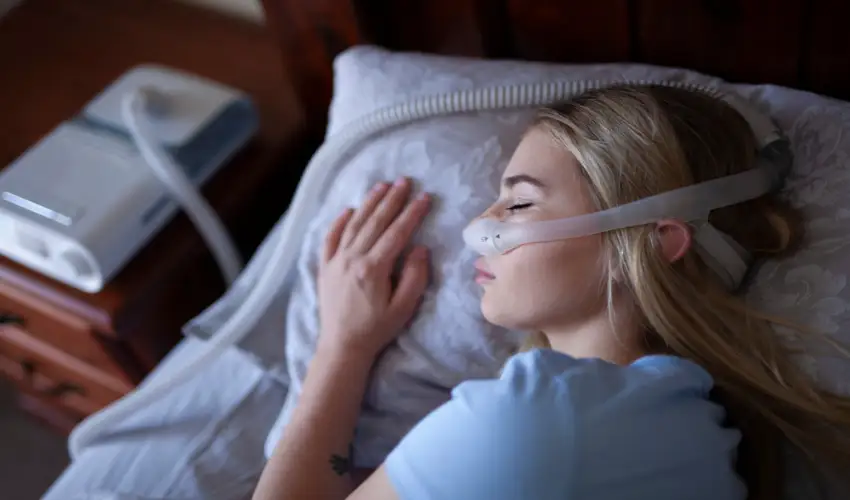Sleep apnea is a common sleep disorder that affects millions of people worldwide. It occurs when breathing repeatedly stops and starts during sleep, leading to restless nights and daytime fatigue. For those diagnosed with sleep apnea, a sleep apnea machine, often called a CPAP (Continuous Positive Airway Pressure) machine, is one of the most effective treatments. If you are a first-time user, you may feel overwhelmed with all the information, settings, and adjustments that come with your new device. This guide will walk you through the essentials of using a sleep apnea machine so you can sleep better and live healthier.
Understanding the Sleep Apnea Machine
A 睡眠呼吸機 is designed to keep your airway open while you sleep. It delivers a steady stream of pressurized air through a mask, preventing the throat muscles from collapsing and blocking airflow. The most common type is the CPAP machine, but there are also variations like BiPAP (Bilevel Positive Airway Pressure) and APAP (Automatic Positive Airway Pressure) machines.
For first-time users, it is important to know that these machines are prescribed by a healthcare professional after a sleep study confirms the diagnosis. Using the right machine and settings ensures you get maximum benefits without discomfort.
Key Components of a Sleep Apnea Machine
Before using your machine, get familiar with its main parts:
- The Machine Unit: This is the device that generates pressurized air.
- Tubing: A flexible hose that connects the machine to the mask.
- Mask: Worn over the nose, mouth, or both, allowing air to flow into the airway.
- Humidifier (optional): Some models come with built-in or attachable humidifiers to prevent dryness in the throat and nose.
- Filters: Keep dust, pollen, and allergens from entering the machine and your airway.
Knowing these parts will make setup and maintenance much easier.
Tips for First-Time Users
- Choose the Right Mask
The mask is one of the most important parts of the sleep apnea machine. If it doesn’t fit properly, you may experience air leaks, discomfort, or difficulty falling asleep. There are three main types:
- Nasal masks: Cover only the nose.
- Full-face masks: Cover both nose and mouth, suitable for mouth breathers.
- Nasal pillows: Sit directly at the nostrils for a lighter fit.
It may take a few tries to find the mask that feels most comfortable.
- Start Slowly
Wearing the mask for the first time can feel strange. Try using the machine for short periods while watching TV or reading before bedtime. Gradually increase the time until you can comfortably wear it all night.
- Adjust Humidity and Pressure Settings
Dryness, sore throat, or nasal congestion can occur in the beginning. Using the humidifier and adjusting settings as recommended by your doctor can reduce these issues. Never change pressure levels without medical advice.
- Practice Consistency
To see real benefits, use the machine every night. Skipping nights will undo your progress and may bring back symptoms such as snoring, fatigue, or morning headaches.
- Clean Regularly
Hygiene is critical. Wash the mask and tubing with mild soap and warm water weekly. Replace filters as instructed by the manufacturer. A clean machine not only lasts longer but also keeps you healthy.
Common Challenges and How to Overcome Them
Many first-time users face challenges when adapting to a sleep apnea machine. Here are a few and how to solve them:
- Mask Discomfort: Try adjusting straps or testing different mask styles.
- Feeling Claustrophobic: Practice wearing the mask during the day to get used to it.
- Air Leaks: Ensure the mask fits snugly without being too tight.
- Noise: Most modern machines are quiet, but if noise bothers you, place the machine slightly farther from the bed or use earplugs.
With patience and persistence, most users adapt within a few weeks.
Health Benefits of Using a Sleep Apnea Machine
Once you get used to your machine, you will likely notice several improvements in your health and quality of life:
- Better sleep quality and reduced snoring
- Increased daytime energy and focus
- Improved mood and mental health
- Lower risk of heart disease, stroke, and high blood pressure
- Enhanced overall well-being
These benefits highlight why consistency in using your device is so important.
Final Thoughts
Adjusting to a sleep apnea machine as a first-time user can feel intimidating, but with the right guidance and consistent use, it becomes second nature. Focus on finding a comfortable mask, keeping your equipment clean, and following your doctor’s recommendations. Over time, you will experience better sleep, improved health, and a noticeable boost in daily energy.
If you are just starting out, remember that patience is key. Stick with the process, and your sleep apnea machine will become an essential tool in helping you achieve a healthier, more restful life.
